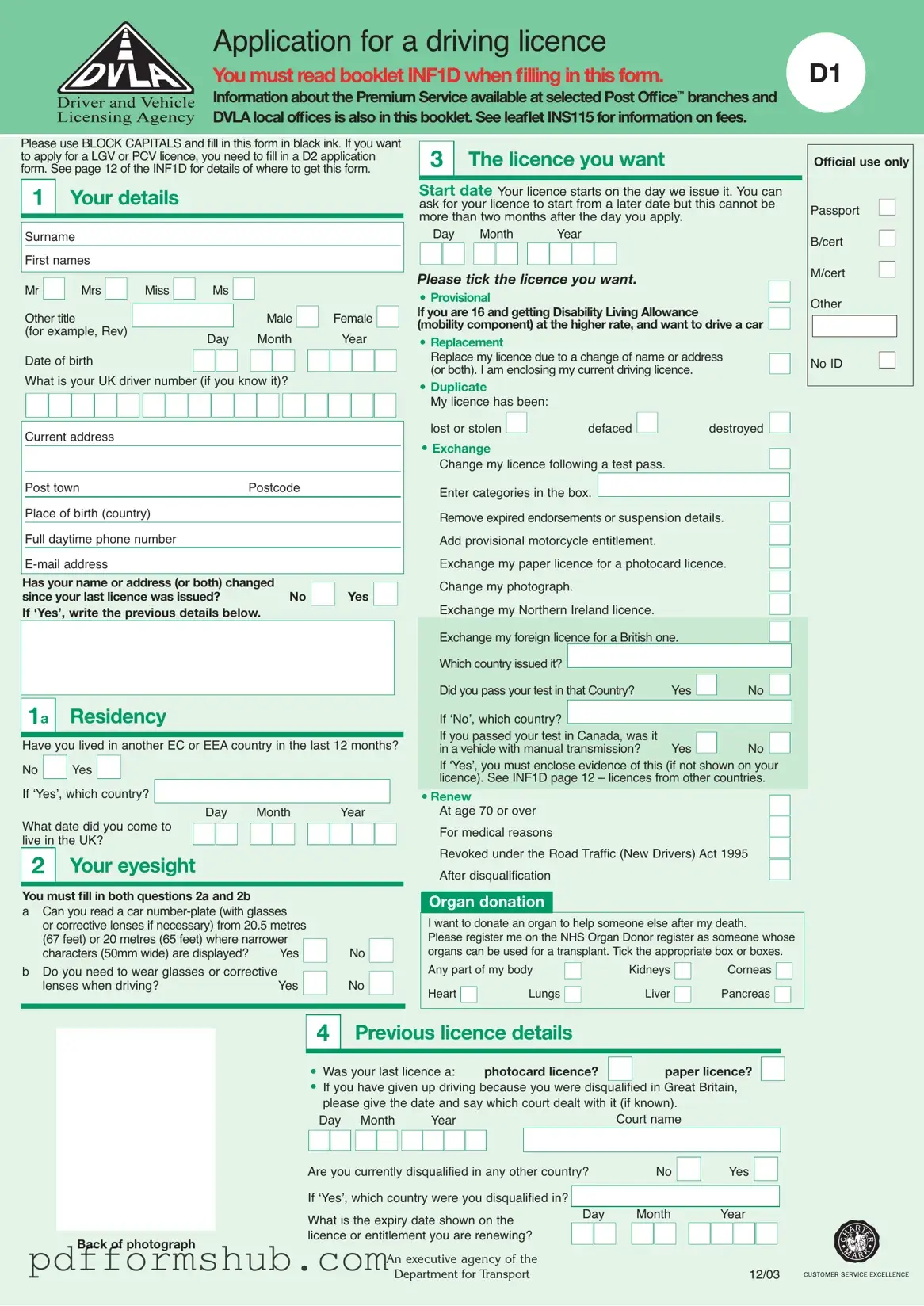The D1 DVLA form is an essential document for anyone looking to apply for or renew a UK driving licence. This form guides users through the application process, ensuring that all necessary information is provided accurately. It includes sections for personal details, eyesight requirements, and the type of licence being requested, whether it be a provisional, replacement, or renewal. Applicants must also confirm their residency status, disclose any health conditions that may affect their ability to drive, and provide proof of identity. Additionally, the form emphasizes the importance of using block capitals and black ink, along with the necessity of including the appropriate fee. For those who have previously held a licence, there are questions about past driving history, including any disqualifications. The D1 form also requires the submission of a recent photograph, which must be signed by a reliable individual. Understanding the various components of this form can help streamline the application process and ensure compliance with DVLA regulations.
